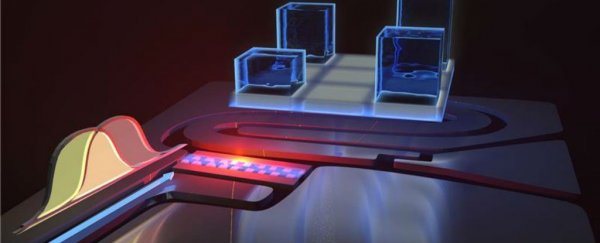Researchers in Finland have figured out a way to reliably make quantum computers - technology that's tipped to revolutionise computing in the coming years - even more powerful. And all they had to do was throw common sense out the window.
You're almost certainly reading this article on a classical computer - which includes all phones, laptops, and tablets - meaning that your computer can only ever do one thing at a time. It reads one bit, then the next bit, then the next bit, and so on. The reading is lightning fast and combines millions or billions or trillions of bits to give you what you want, but the bits are always read and used in order.
So if your computer searches for the solution to a problem, it tries one answer (a particular batch of ones and zeros), checks how far the result is from the goal, tries another answer (a different batch), and repeats. For complicated problems, that process can take an incredibly long time. Sometimes, that's good. Very clever multiplication secures your bank account, and faster or more efficient equation-solvers put that in jeopardy.
But there are other times - like when biochemists want to try out 1,000 compounds on a particular cell - where it would be nice to give a computer all of the options at once and have it quickly return which have the best chances of success.
This is where quantum computers come in. Instead of sequentially trying individual sets of ones and zeros, they can try all sets - all solutions to the problem - effectively at once. They do this by taking advantage of entanglement, where pairs or groups of atoms (or photons) are linked together in a special way that makes them act like a single system doing a single action. The pairs of atoms make up qubits, which are the quantum analogs of bits.
During a calculation, as long as the atoms stay entangled, the qubits simultaneously use every possible combination of ones and zeros that an equivalent number of bits could hold. They explore all of these options and settle on the best one. Then the energy (or spin, or whatever you want, but let's stick to energy) of each qubit is measured.
Atoms have discrete energies, so a qubit with a low measured energy would be called a 0, and one a level up would be a 1. Measurement destroys the entanglement, but it reveals the solution.
But why stop at 0 and 1? If the atoms could each search through more values, the computer could test more options at once. So scientists have started looking into qutrits, where there are three options: 0, 1, and 2, or low energy, middle energy, and high energy. Qutrits are hard to set up, but a stable arrangement would make for an extra powerful computer.
This is where researchers led by Sorin Paraoanu from Aalto University in Finland come in. Publishing in Nature Communications, the team describes how they made qutrits by shooting two pulses of light at a group of entangled atoms. One pulse took them from the lowest energy (0) to a step above it (1), and another pulse lifted them from there to a higher energy (2). The pulses allowed the atoms to access all three of the energies, making them qutrits.
If the atoms sat at the middle energy for too long, they had a good chance of becoming disentangled. This would have ended the experiment immediately. So Paraoanu's team did something odd: they sent the pulses in the wrong order. First came the pulse to bring the atoms from 1 to 2, then the one to take them from 0 to 1. It's like backing out of a parking space by going forward first.
Obviously, you wouldn't do that because you understand causality. You know that you need to back up before you have room to move forward.
Atoms don't care. When the first pulse hit them, they started seeking out all of the possible energies they could go to because of it, and then they settled on the best course after the second pulse hit - even though they couldn't have known the second was on its way when the first one came. They skipped sitting at 1 for any time at all and went right on to 2, where they were much more stable. Once they were at 2, computations could begin.
It seems impossible, but it's just quantum mechanics. Bring on the future of computing.
